Clipart tagged: ‘Steam Turbine’
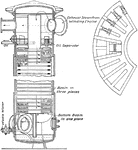
Interior View of Rateau Accumulator
"The accumulator may consist of a large tank in which are numerous plates over which water can flow,…
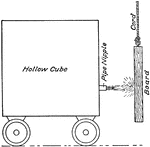
Apparatus for Measuring Jet Stream of Steam
"Suppose a hollow cube to be filled with some fluid (water or steam) at a given pressure, and to have…
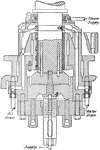
Cross Sectional View of Curtis Turbine Step Bearing
"The upper bearing with dowel—pins and key fit into corresponding dowel holes and key—way…

Cross Sectional View of U.S.S Salem Steam Engine Showing Curtis Turbines
"The marine turbine of this type (Curtis turbine) installed in the U.S. Cruiser Salem had seven pressure…
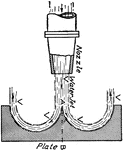
Force Measurement by Deflecting Water Jet 180 Degrees
"Now if the plate were shaped as shown, so that the direction of the jet were completely reversed turned…

Cross Sectional View of Four Stage Vertical Riedler Stumpf Turbine
A cross sectional view of a four stage vertical Riedler—Stumpf turbine. The steam enters and exit,…

Corliss Steam Engine Generator Plan
"By placing the condensers underneath the turbine, as is frequently done at the present time, not only…

Cross Section View of Rateau Turbine Electric Generator by Western Electric Company
A cross sectional view of Rateau electric generator turbine by Western Electric Company. Steam is used…

DeLaval Steam Electric Generator
"The bearings are of the plain ring—oiling type, usually provided with water jackets. The shaft…

Westinghouse Turbo Steam Engine Generator Plan
"Turbines require very much smaller foundations than reciprocating engines reciprocating engines of…

Zoelly Condensing Turbine Electric Generator
"The Zoelly turbine has been developed rather extensively abroad, and is being manufactured largely…
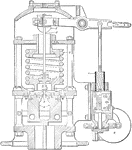
Sectional View of Governor for Varying Number of Nozzles Opened
"In the Curtis turbine, steam is admitted through a series of valves, the number of which depends upon…

Turbine Governor for Varying Time of Admission
"An admission of steam occurs about once in every thirty revolutions at approximately full load. The…
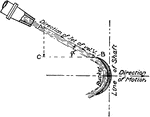
Jet Steam Stream Hitting Curved Vane
"If a jet with the velocity V strikes the bucket at an angle a, its velocity A B could be resolved into…

Cross Sectional View of Parsons Turbine
"Steam enters at E and gradually expands in volume until it exhausts at G. The rotor is usually built…
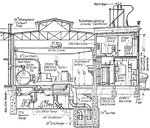
Turbine Station
Arrangement of the electrical equipment in a modern steam-turbine generating station.

9000 Kilowatts Vertical Curtis Turbine
An illustration of 9000 kilowatts capacity vertical Curtis turbine. Each turbines are located between…

Westinghouse Parsons Turbine Viewed Cross Sectionally
A cross sectional view of Westinghouse Parsons turbine. Steam enters at V and exits at E, turning the…

Early Parsons Steam Turbine
"In 1885, Parsons took out his first turbine patent on a motor along the lines previously suggested…

Hartman's Compound Impulse Turbine
"In 1858, Hartman Bros. patented a turbine consisting of two revolving disks c and c' fixed to a shaft…
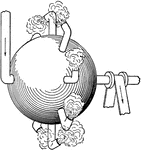
Hero's Simple Steam Turbine
A simple steam turbine by Hero of Alexandra during first century AD. The turbine consists of a hollow…

Sectional View of Kerr Turbine
"The shaft, where it passes through the diaphragm, is fitted to a bronze bushing with a few thousandths…
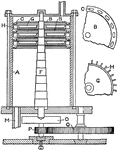
Real and Pichon Compound Steam Turbine
"A compound turbine was patented by Real and Pichon, the idea being to reduce the velocity of rotating…
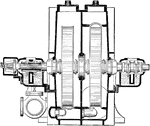
Cross Sectional View of Two Stage Condensing Terry Steam Engine Turbine
A two stage condensing Terry turbine from a steam engine. The steam, entering from the top, rotates…

Wilson's Compound Steam Turbine
"A view of Wilson's invention is shown; a, b, and c, are vance which are attached to and rotate with…

Water Jet Deflected 90 Degrees Measuring Force
"If the velocity of impact of the jet is V feet per second, its velocity in the same direction after…